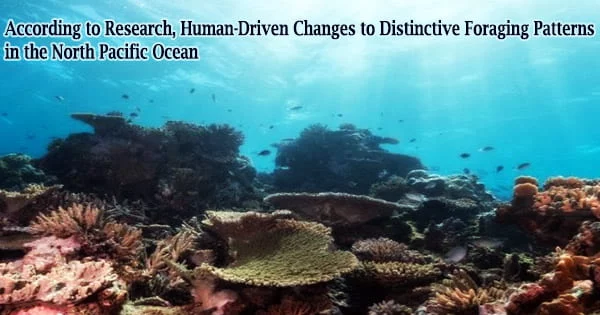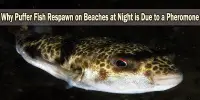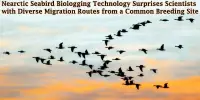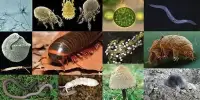The first large-scale study of its sort has found nearly 4,000 years of unique foraging behavior in a species that was once on the verge of extinction.
By studying isotopes found in archaeological and museum-archived samples of the bird dating back to 2300 BCE, an international team of researchers led by the University of Leicester identified long-term patterns in the behavior of the short-tailed albatross (Phoebastria albatrus) in the North Pacific Ocean.
Their findings, which were published in Communications Biology today (Thursday), show for the first time long-term patterns in foraging behavior for the short-tailed albatross, demonstrating how individual birds foraged the same hyper-localized sites for thousands of years despite the species’ vast potential foraging range spanning thousands of miles of Pacific coastline and open ocean.
However, this behavior, known as long-term individual foraging site fidelity (LT-IFSF), can put animals who specialize in places that are damaged by human activity at danger.
The Pacific Ocean is a body of salt water that stretches from the 60oS parallel in the south to the Arctic Circle in the north, sandwiched between Asia and Australia on the west and North America and South America on the east.
Between the 1880s and 1930s, feather hunters drove the short-tailed albatross to extinction, and while diligent conservation has resulted in exponential population growth in recent decades, this LT-IFSF trend has not been recorded in the previous century.
Dr. Eric Guiry, a lecturer in Biomolecular Archaeology at the University of Leicester and the study’s corresponding author, concentrated on two sites in Yuquot, Canada, and compared findings to sites in the United States, Russia, and Japan. He said:
“Understanding migratory behaviour is critical for global biodiversity restoration because it helps identify vulnerable regions for environmental protection. Although evidence for the extent and depth of LT-IFSF across other species is still emerging, the extreme distances and time scale of the behaviour seen here indicates that this foraging strategy may be a fundamental, density-driven adaptation that could become widespread again as recovering animal populations reach pre-industrial levels.”
One of the most exciting findings, however, is actually quite a positive note. Our data also indicate that Indigenous communities at Yuquot were harvesting these birds with little impact on their population for thousands of years. Not only does this tell us something about the long-term sustainability of Indigenous marine resource use at Yuquot, it provides a clear example of how people and the short-tailed albatross can co-exist.
Dr. Eric Guiry
By analysing stable carbon and nitrogen isotope ratios in bone collagen samples, a research team from Leicester, the Land of Maquinna Cultural Society (Canada), Vrije Universiteit Brussel (Belgium), and Simon Fraser University (Canada) was able to monitor this foraging behavior.
In contrast to most other tissues, such as muscle or feather, which turn over on a daily, weekly, or monthly basis, the isotopic compositions of bone collagen, which remodels slowly throughout an individual’s lifetime, reflect an average of meals consumed over the last many years.
This gives researchers a unique perspective on animal feeding and migration patterns across time.
The researchers were able to piece together a picture of the short-tailed albatross’ migratory and foraging behavior over hundreds of generations by mapping these biological markers against known isotopic baselines across the species’ foraging range, which were linked to factors like sea surface temperature and CO2 concentrations.
However, because this behavior is no longer observed in these birds, their findings indicate that this hyper-specialized foraging in specific sites vanished when the birds were driven to near extinction in the 1880s, when just a few individuals remained.
Dr. Guiry continued: “We think this behaviour could be driven by competition among birds, meaning that, as the population recovers, we could see it re-emerge. This kind information is important because it provides advanced warning that monitoring for this remarkable behaviour, which can make the birds more vulnerable to human impacts, may need close attention.”
“One of the most exciting findings, however, is actually quite a positive note. Our data also indicate that Indigenous communities at Yuquot were harvesting these birds with little impact on their population for thousands of years. Not only does this tell us something about the long-term sustainability of Indigenous marine resource use at Yuquot, it provides a clear example of how people and the short-tailed albatross can co-exist.”
















